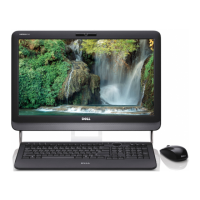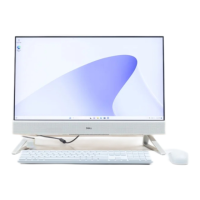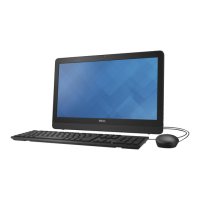Troubleshooting
Flashing the BIOS
You may need to flash (update) the BIOS when an update is available or when you replace the system board.
Follow these steps to flash the BIOS:
1. Turn on your computer.
2. Go to www.dell.com/support.
3. Click Product support, enter the Service Tag of your computer, and then click Submit.
NOTE: If you do not have the Service Tag, use the auto-detect feature or manually browse for your computer model.
4. Click Drivers & downloads > Find it myself.
5. Select the operating system installed on your computer.
6. Scroll down the page and expand BIOS.
7. Click Download to download the latest version of the BIOS for your computer.
8. After the download is complete, navigate to the folder where you saved the BIOS update file.
9. Double-click the BIOS update file icon and follow the instructions on the screen.
Reinstall Windows using a USB recovery drive
CAUTION:
This process formats the hard drive and removes all data on your computer. Ensure that you back up data on
your computer before beginning this task.
NOTE: Before reinstalling Windows, ensure your computer has more than 2 GB of memory and more than 32 GB of
storage space.
NOTE: This process may take up to an hour to complete and your computer will restart during the recovery process.
1. Connect the USB recovery drive to your computer.
2. Restart your computer.
3. Press F12 after the Dell logo is displayed on the screen to access the boot menu.
A Preparing one-time boot menu message appears.
4. After the boot menu loads, select the USB recovery device under UEFI BOOT.
The system reboots and a screen to Choose the keyboard layout is displayed.
5. Choose your keyboard layout.
6. In the Choose an option screen, click Troubleshoot.
7. Click Recover from a drive.
8. Choose one of the following options:
• Just remove my files to do a quick format.
• Fully clean the drive to do a complete format.
9. Click Recover to start the recovery process.
Enhanced Pre-Boot System Assessment (ePSA)
diagnostics
CAUTION:
Use the ePSA diagnostics to test only your computer. Using this program with other computers may cause
invalid results or error messages.
45
Troubleshooting 85

